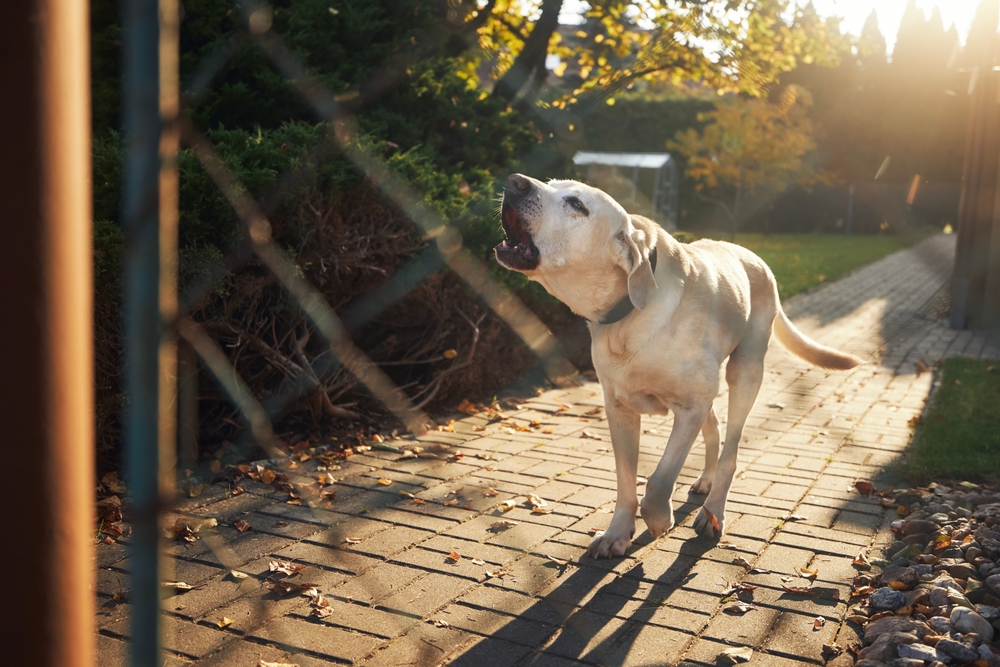Your dog’s constant barking isn’t just random noise—it’s full of meaning. Dogs express emotions, instincts, and needs through barking, so those extra vocalizations might tell you something important. Instead of feeling overwhelmed by their yapping, consider each bark a clue. From hidden anxieties to boundless energy, here’s what your dog’s barking may reveal.
1. They’re Easing Their Anxiety, One Bark at a Time

For some dogs, barking is a coping mechanism for anxiety. When their routine changes, they’re left alone, or new faces arrive, barking might help them self-soothe. Dogs can be sensitive to slight shifts, and this vocalization becomes their version of expressing unease. By observing these specific triggers, you’ll begin to recognize when their barking might be a response to underlying anxiety.
2. They’re Flexing Those Guard Dog Muscles

Your dog might be channeling their inner protector every time they bark at passing strangers or the sound of a door creak. Many breeds have natural guarding instincts, and barking is their way of saying, “I’m watching; don’t come too close.” While this tendency is often beneficial, guiding them with balanced training can help manage the volume while honoring their instinct to keep an eye on things.
3. They’re Barking for the Spotlight

Sometimes, barking is just your dog’s way of getting noticed, especially if they feel ignored. Dogs crave social connection; if barking gets a reaction, it quickly becomes a go-to move. Ensuring they have plenty of engagement, play, and connection each day can satisfy this need and help decrease these “look at me!” moments. Attention-seeking barks often fade when they feel secure and included.
4. They’re Reacting to Every Little Stimulus

Some dogs are hyper-alert to changes in their surroundings and react accordingly, whether it’s a squirrel, a car, or even a moving shadow. Known as “trigger barking,” this can happen if your dog is naturally sensitive or has a high prey drive. They’re simply responding to what they consider noteworthy events. Calming training exercises and clear boundaries can help them process the world without barking at every little movement.
5. They’re Releasing Pent-Up Energy

High-energy dogs without enough exercise might use barking to release stress, which becomes a way to occupy themselves without sufficient outlets for their energy. Adding more walks, games, or mental challenges throughout their day can help them feel satisfied and reduce the need to bark for entertainment. If their energy is burned off through physical activity, they’re less likely to find their voice to stay busy.
6. They’re Communicating Their Boredom or Frustration

Your dog might turn to barking if they’re feeling bored or frustrated. When their days are too predictable or unstimulating, barking becomes a way to express, “I need something to do!” Look out for increased barking when they’re left alone for extended periods. Adding more engaging toys or switching up their routine can help keep their minds busy and vocalizations down.
7. They’re Signaling a Health Issue

Uncharacteristic barking may hint at discomfort or even health issues. If your ordinarily quiet dog becomes vocal without any apparent reason, it might be time to consult the vet. Hearing loss, joint pain, or age-related changes can all influence vocal habits. Keeping an eye on when and how their barking patterns change is crucial in catching any health-related concerns early on. Regular vet checkups help monitor any potential issues.
8. They’re Practicing a Habit They’ve Learned

Dogs can learn that barking leads to a reward, whether a treat, a toy, or simply your attention. This learned behavior can become a habit if they see barking as a shortcut to the things they want. Reconditioning them with positive reinforcement, where you reward calm behaviors instead, can help shift their pattern from loud demands to quiet patience. Consistency here helps reinforce their new habit of quiet communication.
9. They’re Barking to Bond With You

Your dog might see barking as a way to connect with you, especially when you walk in the door or bring out a favorite toy. It’s their version of a friendly “hello” or an invitation to play. These joyful barks show their eagerness to bond and don’t always need to be curbed, but redirecting their excitement to quieter behaviors—like a wag or a tail shake—can help manage their volume in these bonding moments.
10. They’re Embracing Their Breed Traits

Some dogs are simply more vocal, thanks to their breed characteristics. Breeds like Beagles, Huskies, or certain terriers have a natural enthusiasm for talking, and barking may be a crucial part of their personality. Understanding this trait can help you set realistic expectations and training techniques that respect their nature. Embracing their expressive side while setting boundaries can help them feel understood without constant vocalization.
